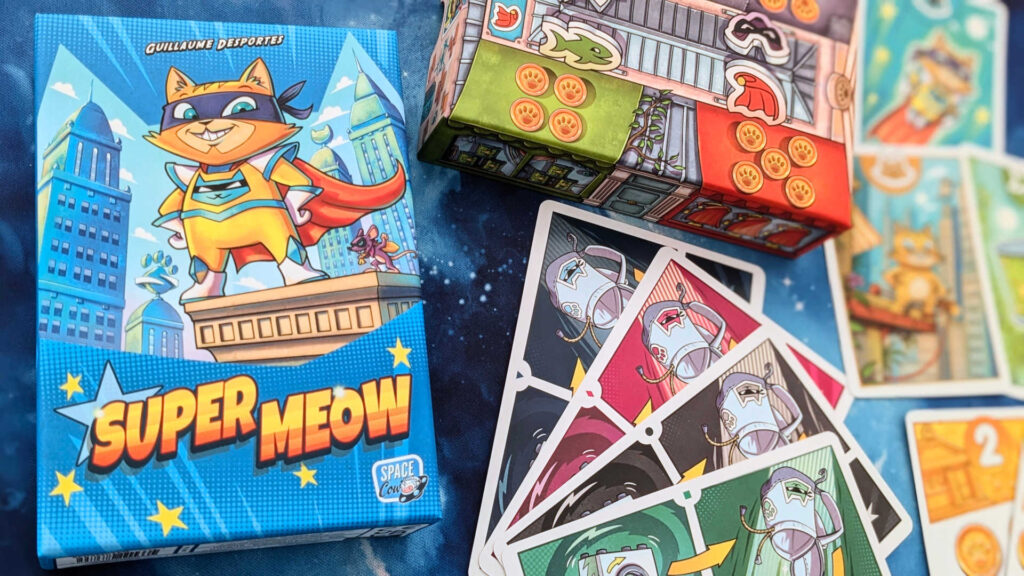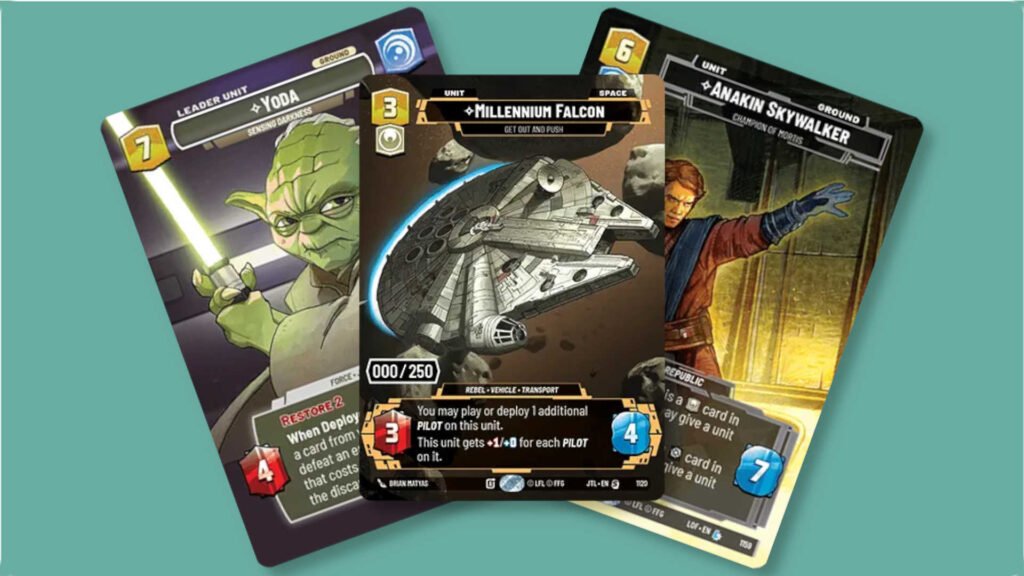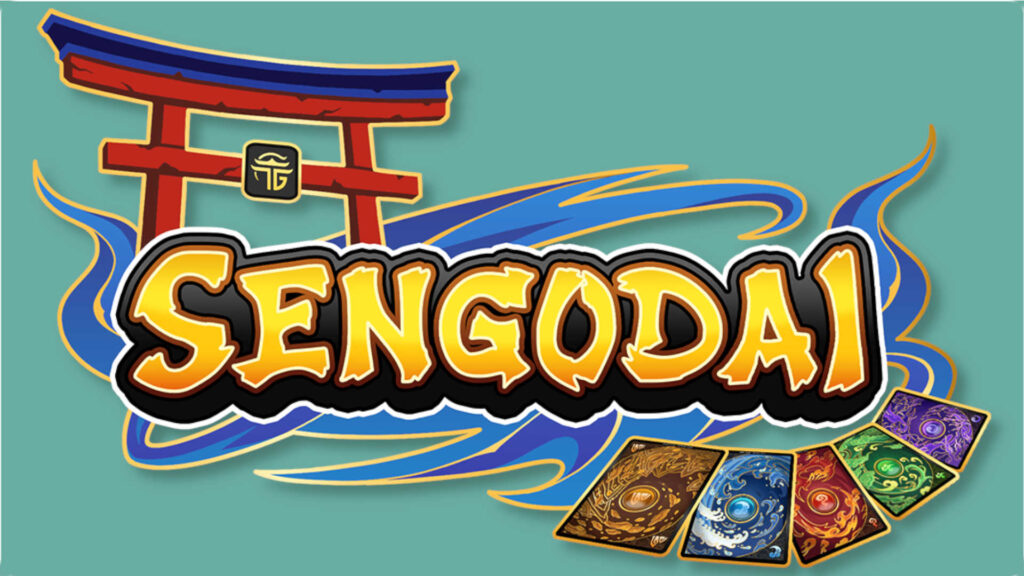Image credits to the author
Here at Card Gamer, many of us have been building our own decks for decades; whether it be in the pioneering trading card game, Magic: The Gathering, more self-contained experiences such as Street Fighter: The Deck-Building Game or Star Realms, or even digitally in titles such as Slay the Spire. Deck building is a hugely satisfying and often very rewarding mechanic, and it forms the basis of so many fantastic games. Yet it can be daunting and even overwhelming for younger players to get to grips with, which is where games such as Super Meow (from Space Cow Games) can prove very useful.
Table of Contents
ToggleGetting Started With Super Meow
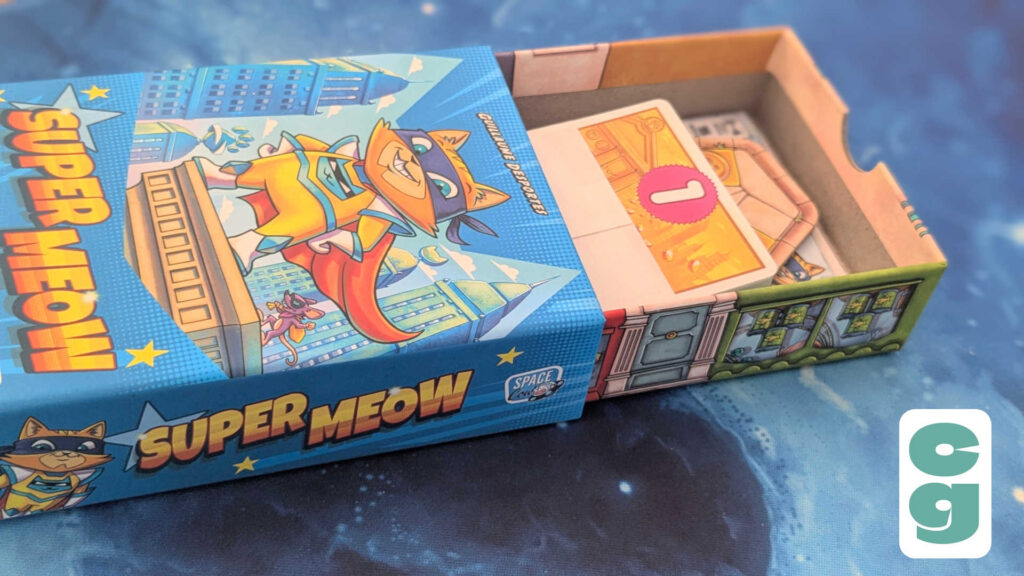
The small, single box of Super Meow is one of the best packaging designs we’ve seen for a game in some time; not only does the outer sleeve become the game’s trash can (for disposing of cards removed during the game), but the inner tray also doubles up as the marketplace, around which all cards which can be purchased are arranged.
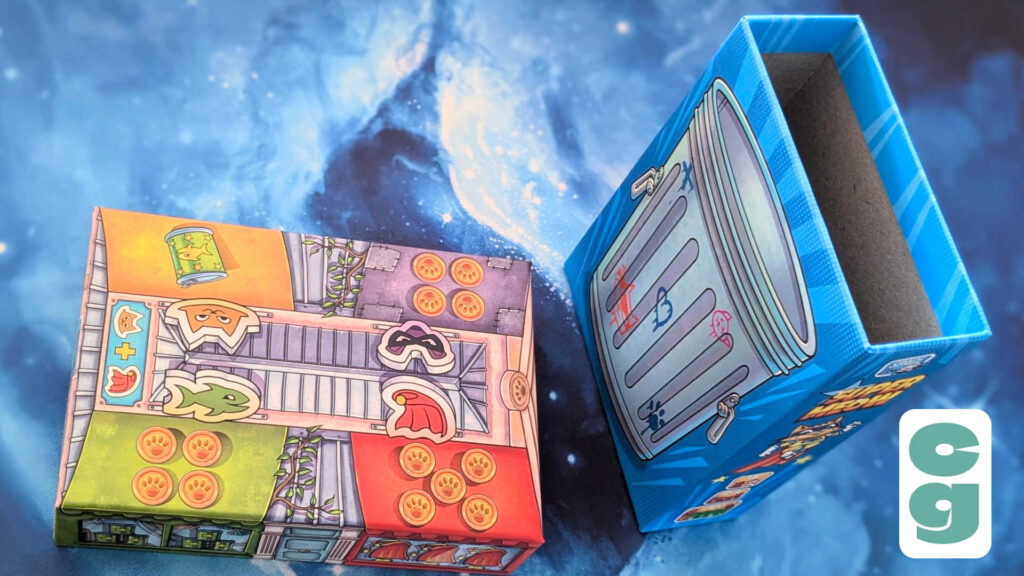
Which is exactly how you begin; slide the boxes apart, stand the trash can up near the play area, turn over the inner box to make the marketplace and arrange all of the cards around it, in their designated spaces as illustrated (and shown below).
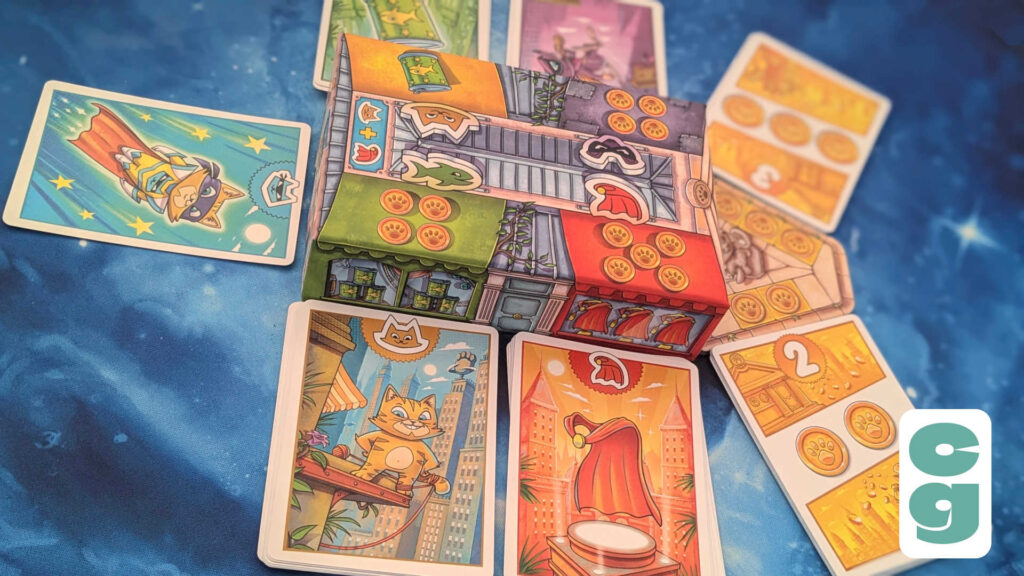
The sides of the box (not to mention the colors of each canopy on the marketplace) show where each stack of cards should be placed, and there’s an extra tile to make the bank at the end of the marketplace.
Then players take the player card in the color of their choice, along with the four coin cards showing the color which matches the player card, which make up their starting deck.
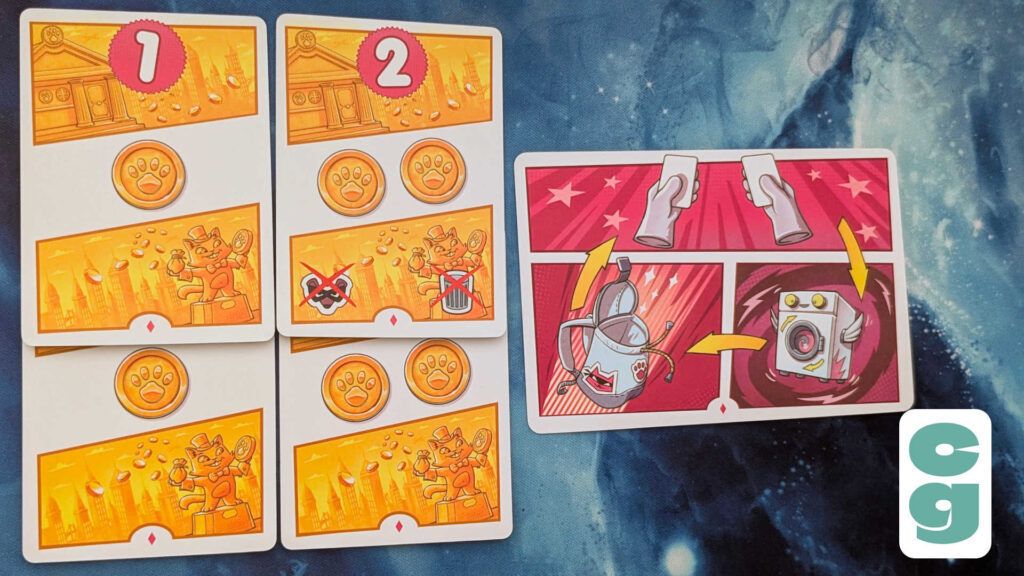
In a welcome touch, each player color also has a symbol, to assist if any players have issues with colorblindness; in the case of the player with the pink player card and deck shown above, it’s a diamond at the bottom of each card.
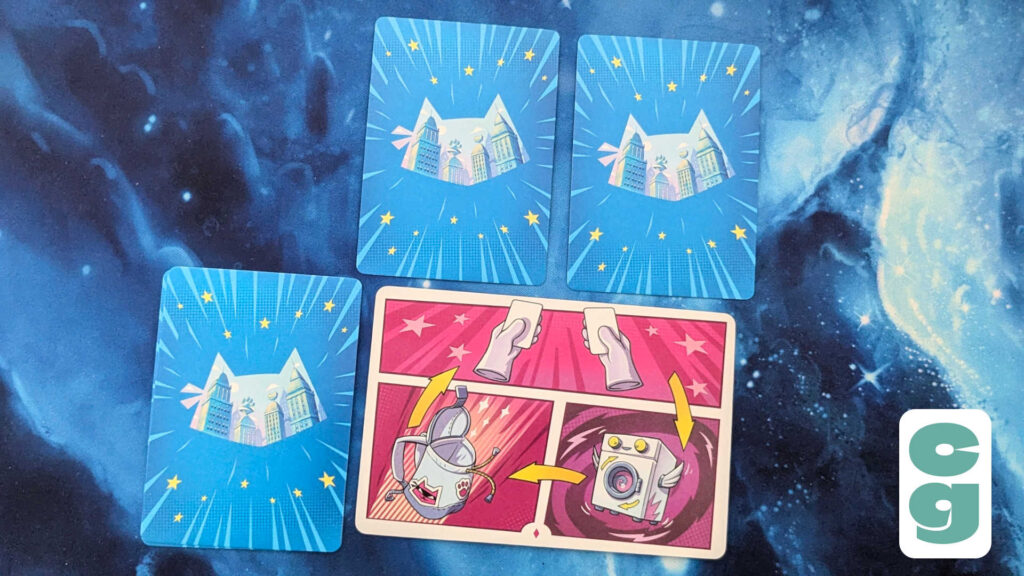
Players shuffle their starting decks and place them face down “in their backpack” (at the left of their player card), draw two cards to create their opening hand (placed above their player card), and play begins with the first player, who is chosen as the best player to imitate a cat meowing!
How to Play Super Meow
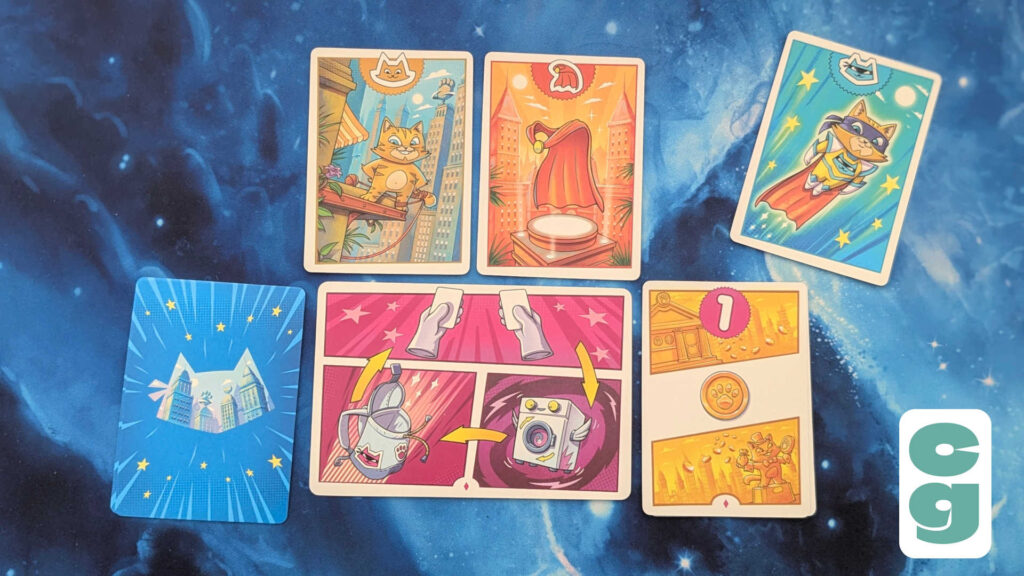
To win at a game of Super Meow, you must be the first player to draw a cat and cape card at the same time, thus finding the eponymous feline superhero and earning you the coveted Super Meow card.
Each turn, players will turn over the two cards in their hand (always face down above their backpack until their turn), and use them to perform actions. Actions a player can take on their turn are as follows:
- buy a card
- throw a card in the trash
- use a mouse card
- or pass their turn.
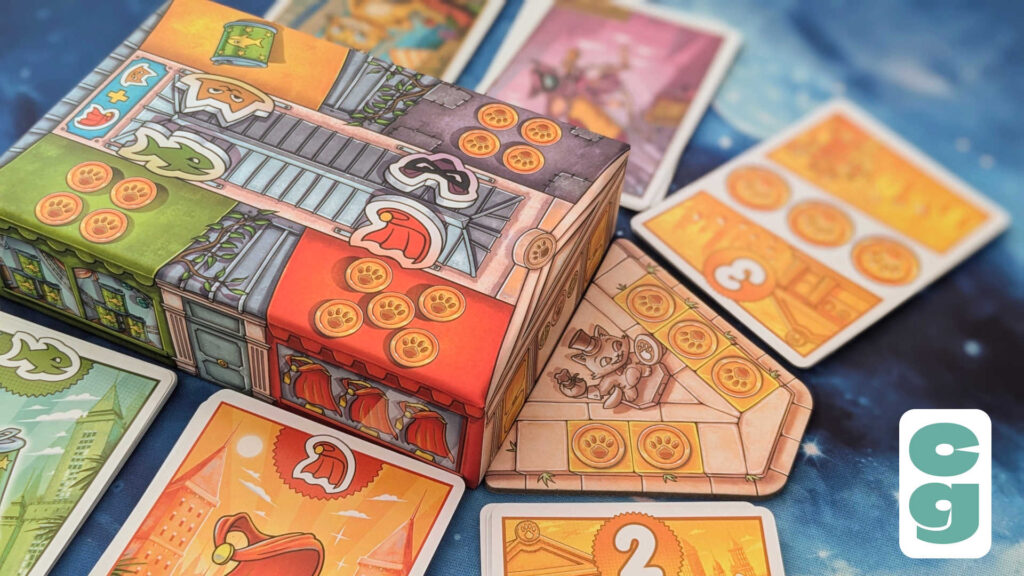
Buying a card is simple: use the coins in your hand to purchase cards from the market, with their coin values shown on the marketplace box and bank tile.
At first, the only cards a player will have in their deck are coins, so they’ll likely spend a few turns building up the coin cards in their hand by buying higher value coin cards than they start with. Later, they’ll be able to buy more expensive cape cards, or cans of cat food; cats can’t be bought, but are instead lured to your deck with the cans of cat food.
Throwing away a card involves throwing one of the cards in your hand in the trash can. Note that one of the starting cards in each deck has a symbol shown which means that it isn’t permitted to be thrown away in this manner, but any other card can be removed from the deck in this way.
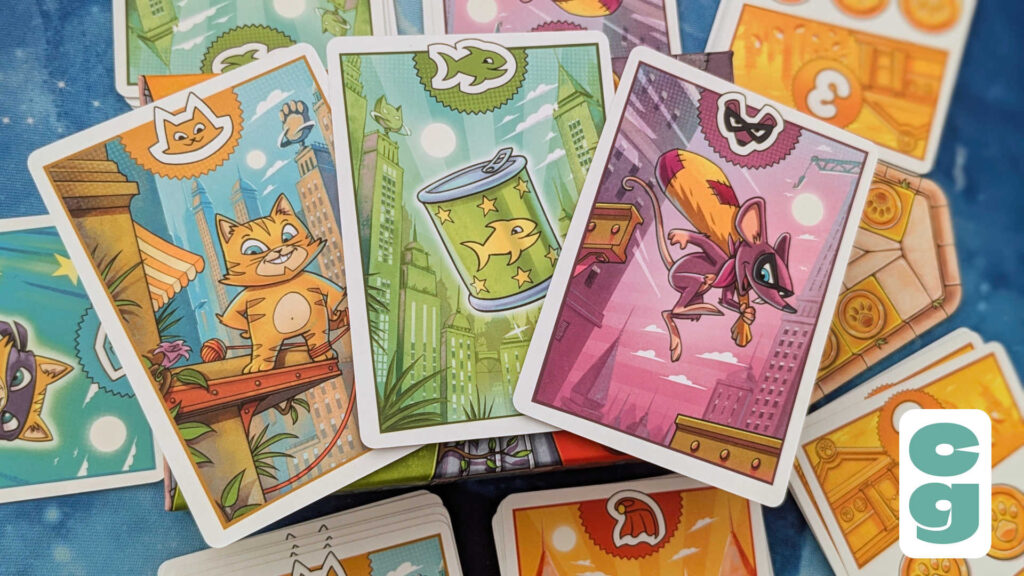
Mouse cards can be purchased from the marketplace, and when you have one of these in your hand, you can use it to steal a face down card from another player’s hand. Simply choose a face down card and place it in your washing machine (which is your discard pile, in the game’s terminology) face up, then discard the mouse back to the marketplace. If you choose the starter card which can’t be discarded, it also can’t be stolen, so the mouse goes straight back to the market and you gain nothing.
Finally, it’s also possible to pass entirely; this may be necessary if a player turns over two cats, for example, although of course they may still discard one if they choose.
Once a player has taken their turn, they place any remaining cards from their hand into their washing machine, draw their next turn’s hand from their backpack (if they can’t draw two cards, their washing machine pile is reshuffled and placed face down in their backpack), and play passes to the next player.
Is Super Meow Fun to Play?
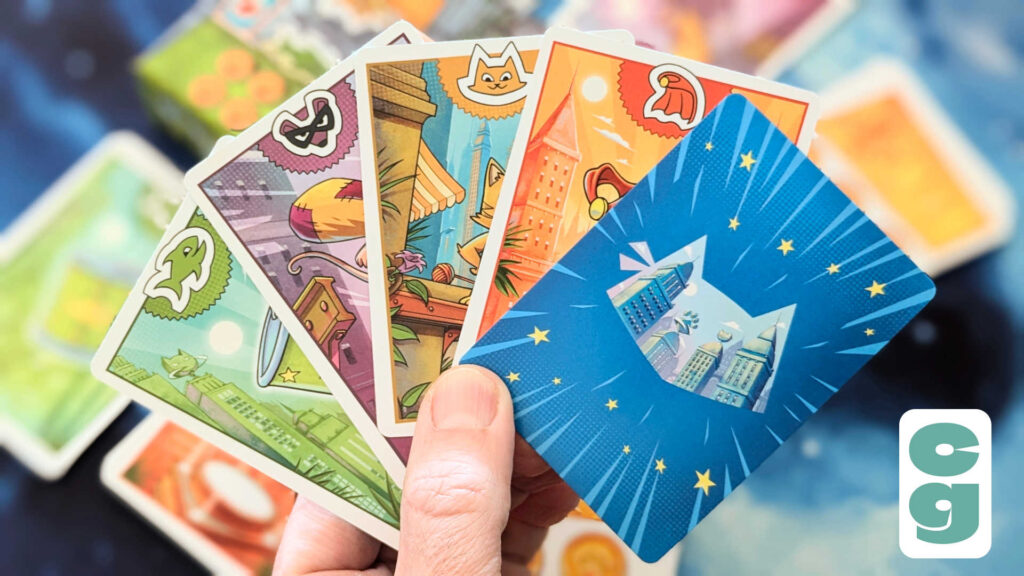
There’s a great, very fast paced flow to Super Meow’s gameplay, and very young players are likely to really enjoy playing the game numerous times. However, the fact that the game is so basic, and the strategy so obvious, likely even to those aforementioned youngest of players, means that it may not be a game which lasts. It’s a perfect way to introduce the basics of deck building to players who haven’t encountered the mechanic before, and it does a fantastic job of teaching the genre’s concepts of buying and trashing cards to improve and refine a deck, but the question of its longevity remains.
It’s also an absolutely gorgeous game, with superb artwork and brilliant design across all of its packaging and components, with the player cards doubling as very useful, text-free player aids. It’s worth noting that everything used in the game is entirely free of text, so it really is a game that’s suitable for the youngest of players, as it’s not even a requirement to have mastered the art of reading in order to play and enjoy Super Meow.
The Card Gamer Verdict
A beautifully packaged, thoughtfully presented deck building game for absolute beginners, Super Meow presents its mechanics in an accessible and appealing way. It’s a great way to learn the principles of deck building, and Super Meow’s tactile approach, making use of every element of the packaging within the game itself, is genius.
However, the game itself is very light indeed, and is very likely to wear thin very quickly for all but the youngest, most inexperienced players. If you’re looking to introduce deeper card game concepts to the youngest players in your family, it’s perfect, but slightly older children are likely to want to quickly move on to more in-depth games after getting to grips with deck building in Super Meow.
Want to check out more card games which aren’t too complex for newcomers? Take a look at our reviews of the Clone Wars Edition of Star Wars: The Deckbuilding Game, the Altered TCG, or Adventure Time Card Wars.


